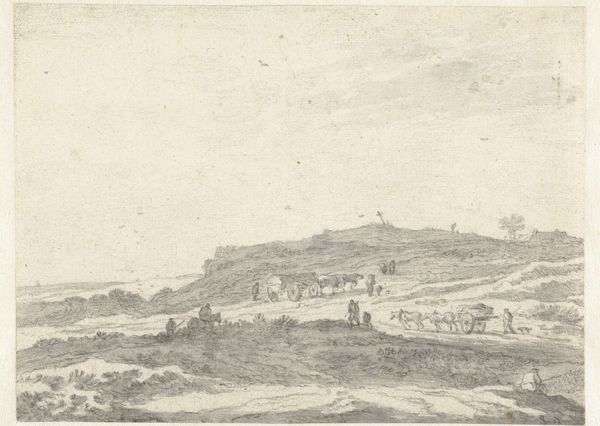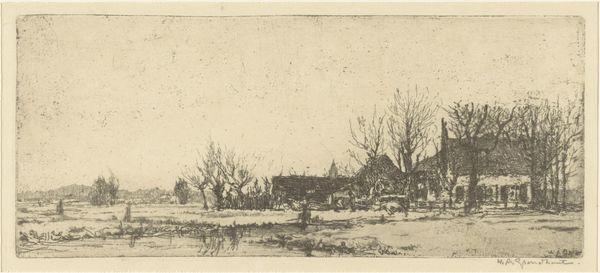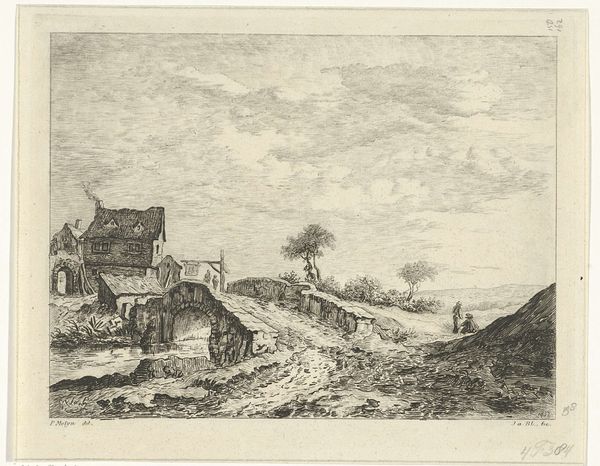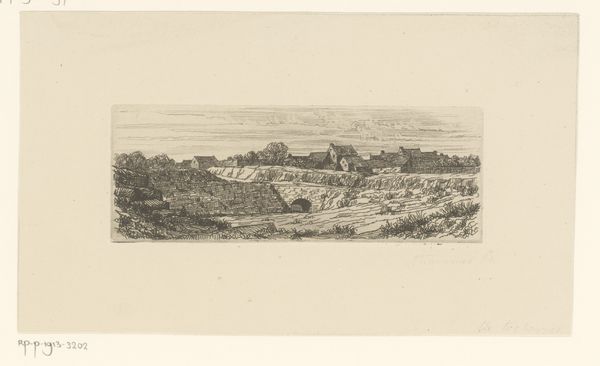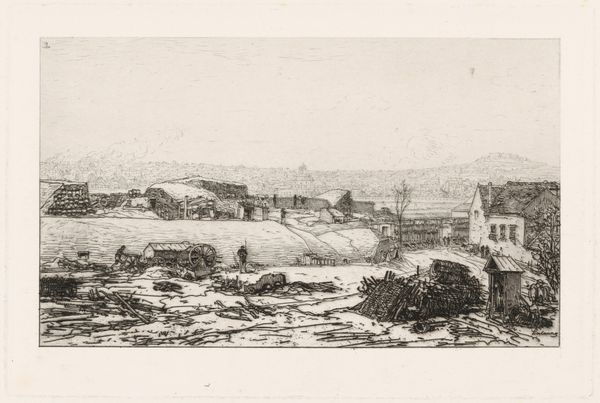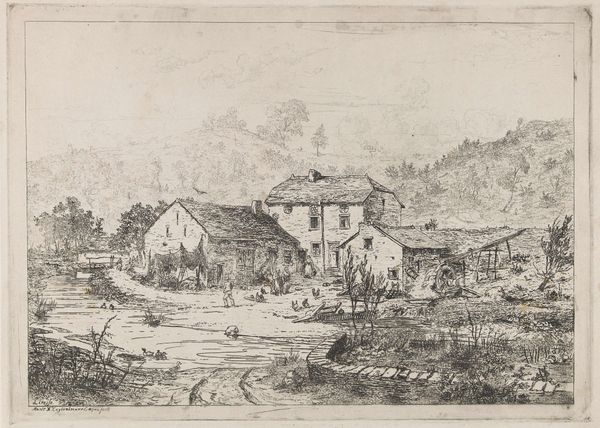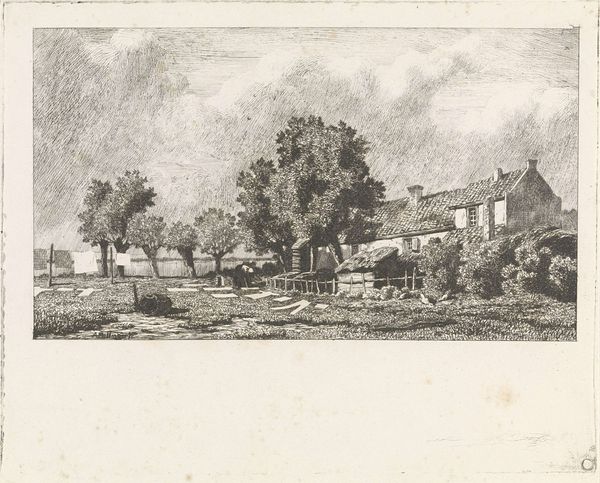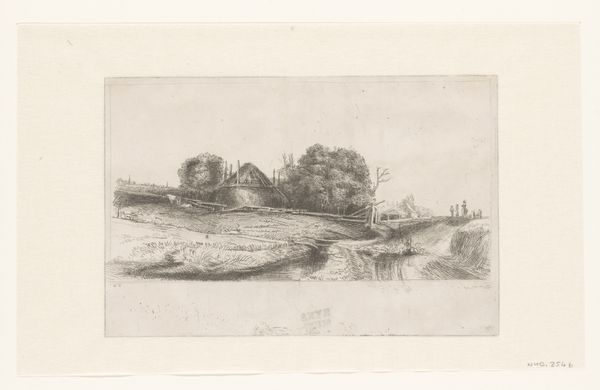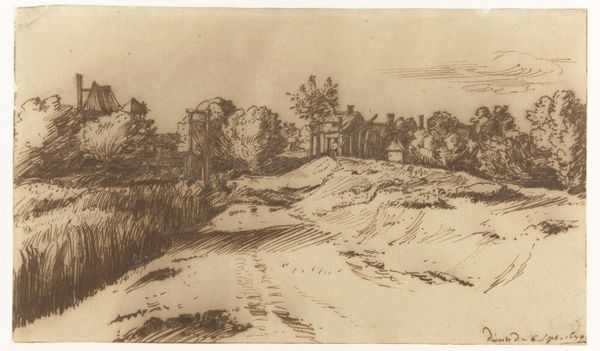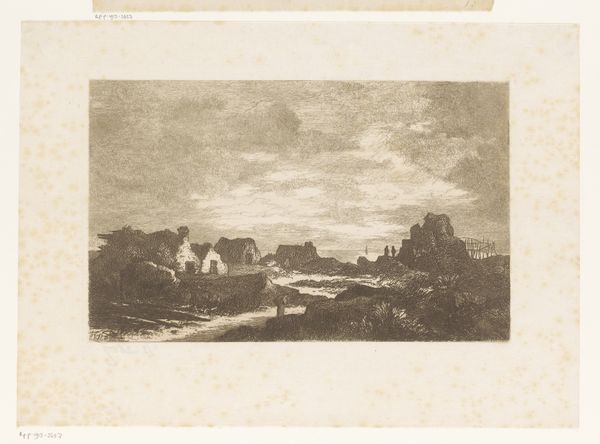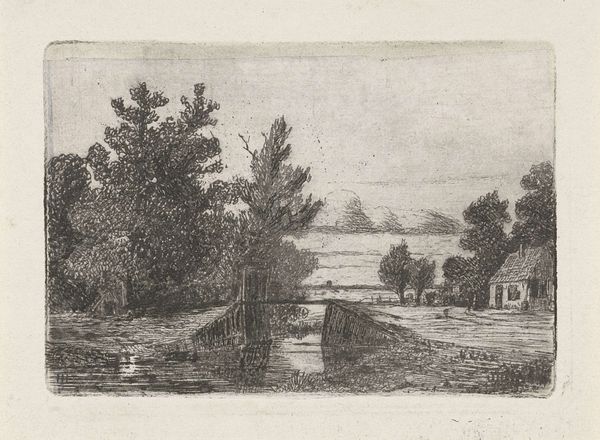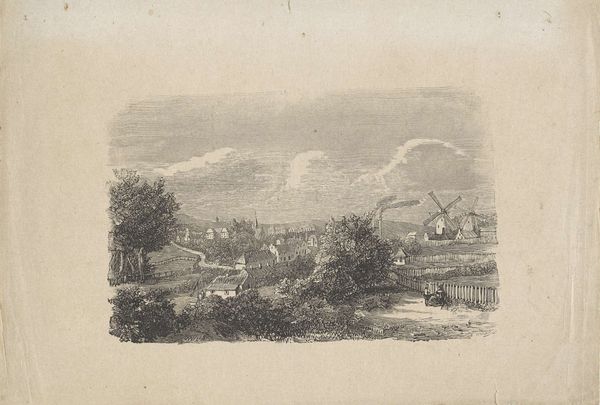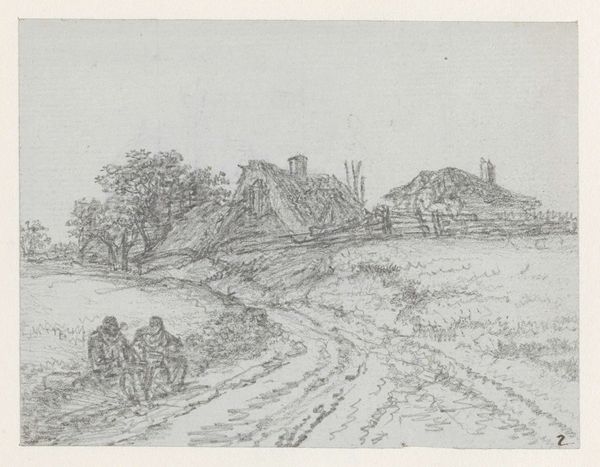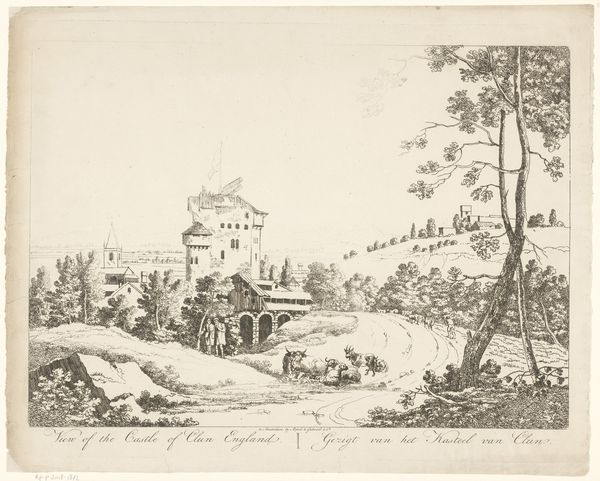
print, etching
# print
#
etching
#
old engraving style
#
landscape
#
etching
#
romanticism
Dimensions: height 126 mm, width 200 mm
Copyright: Rijks Museum: Open Domain
Curator: This is an etching of a landscape scene. The title is "Heuvellandschap met ruïne van kerk of klooster," or "Hills with ruins of a church or monastery". It was produced sometime between 1809 and 1869 by Dirk Vis Blokhuyzen. What strikes you when you first see it? Editor: Melancholy. It whispers of forgotten empires. A certain gentle gloom clings to that ruined tower, doesn't it? I keep thinking about the people who might have walked that road a century before. Curator: The print uses the etching technique, giving it that fine, detailed line work characteristic of the era. Blokhuyzen was working in a period dominated by Romanticism, a movement where nostalgia for the past and dramatic landscapes often took center stage. Editor: Definitely Romantic. Look at the framing too, those stark lines. You've got this serene-ish view of humanity ambling through a wild overgrown space, carefully organized by those crisp boundaries. There is an inherent contradiction. Makes you wonder what's just outside that frame. Curator: Precisely! The ruins invite viewers to contemplate the transient nature of human achievement. It evokes a sense of time flowing and societies rising and falling. The imagery really resonated with audiences of the time, reminding them of simpler days. Editor: It also makes one think about who got to experience the so-called simple days. Looking closely, though, even within the image there is a hierarchy, an explicit difference in the textures depending on their distance from the front. In the foreground there is rich and deliberate hatching, with almost nothing for the distant landscape. A reminder that the past always looks "simpler" from afar. Curator: Good point. Etchings like these weren't just aesthetic; they helped shape how people thought about their place in history, the role of institutions, and what truly lasted. Editor: Ultimately, it's a memento mori, sugar-coated in idealized countryside. But even that sweetness has a bit of vinegar lurking beneath the surface. Thanks for revealing even more. Curator: A pleasure. It is fascinating how the landscape provides a space to examine human constructs of power and their legacies.
Comments
No comments
Be the first to comment and join the conversation on the ultimate creative platform.
